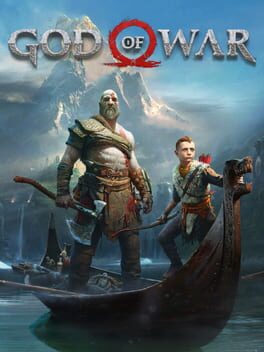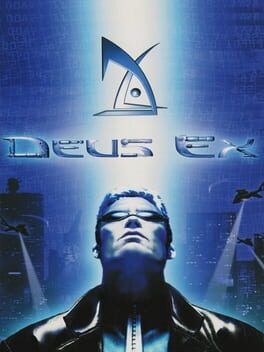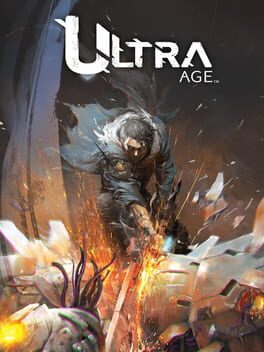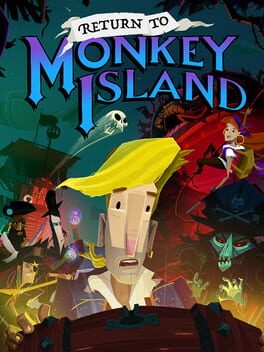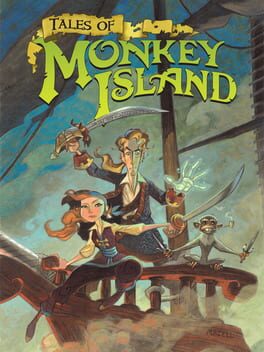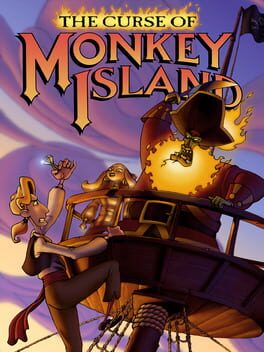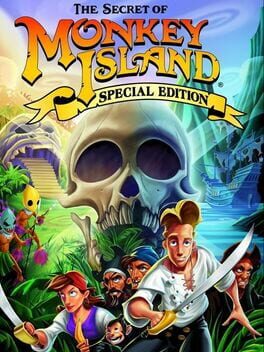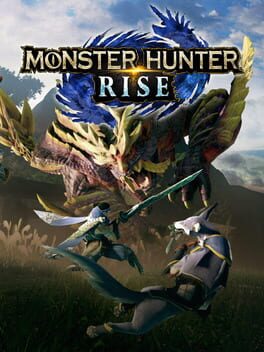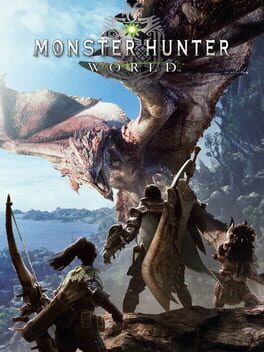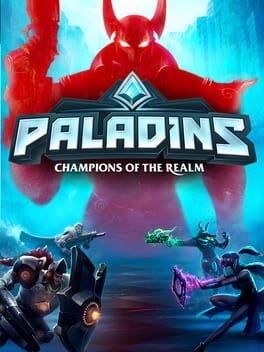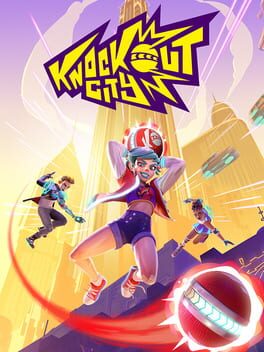Sack
2018
On the surface, its an absolutely incredible game. As I kept playing though, a lot of flaws started to show up, and made it a not-incredible-but-still-pretty-good game.
Let me start with the positives first, and usually I'd start talking about the gameplay, but this game does something super unique that very few games ever do: a sense of scale. Often times when I'm playing a game, I'd start to notice that my character is bigger than a pretty large rock, or maybe the fence posts are too big. In this game, everything feels huge and you feel tiny. From climbing up the mountain to looking up and seeing the World Serpent looming over you, but being beneath the high-up clouds. This game also achieves a sense of scale by limiting your movement, whereas a lot of games you can climb up the mountain with ease.
As for the gameplay, there's so much weight in your attacks. Slicing your axe vertically up into an enemy and juggling them with a variety of attacks is super satisfying to do with tons of creativity. Unfortunately it doesn't hold the same weight towards the end of the game, as it becomes optimal to have a bread and butter combo while having immunity to knockback while also mashing square for Atreus arrows (for context, I played the "Give me a Challenge" difficulty with no revive stones)
A lot of people complain about the enemy variety in this game, and while I agree with it from a design perspective, the strategy to beating most enemies varies. For example, an enemy may fly away after being launched, so you need to either do grounded attacks only or after they fly away, using the blades of chaos to pull them back to the ground to continue your combo. Another example I love is that an enemy typically buries underground and is annoying. That is until you launch them in the air, in which case you need to focus on aerial combos rather than grounded combos, or use paralysis arrows to keep them still.
Story was also good, but to be honest it didn't really grab me to where I was super invested.
Now where I give praise to the enemy variety, the same cannot be said about the boss variety. Most of them are different types of ogres, trolls and golems, which were good for the first fight, but not the second, third, fourth, fifth, and so on. And yes, I've done all the Valkyries. They all have the same moveset with one or two new moves, which meant they were pretty easy and predictable. Valkyrie Queen was a decent boss fight, but instead of having one or two new moves, she just had all the moves from the different Valkyries, which kept me on my toes for a bit. Other than that, the other non-clone boss fights were decent, with Baldur being the best ones.
I do wish this game had more weapon variety. My playtime was probably 85% Leviathan Axe, 10% Blades of Chaos, and 5% fists. It doesn't help that the Blades of Chaos come way too late in the game.
Though I didn't talk about the exploration, I liked it. It was a bit generic, but fun. What I'm most disappointed about is the different realms. Midgard is fun and obviously the main area, but the other realms were so boring, with the exception of Muspelheim! That realm was really fun and some of the best fights in the game, counteracted by Niflheim which is one of of the absolute worst and laziest areas I've been into in a video game.
My last negative point is hard to explain, but I'll try: I love RPGs. I love action games. I love action RPGs. This game is an action game slapped with RPG mechanics for the sake of adding difficulty and lazy progression. Instead of making more interesting hard enemies, they simply slapped some boosted stats and unblockable attacks. Instead of progression being skill based, it is by a rarity/loot system that makes you stronger. All of these I don't mind, but typically in Action RPGs, you have build variety to change you playstyle. In God of War, there is no variety in builds. The only way you can make your character play somewhat differently is doing the Valkyries and getting their enchantments and armors, and by that point, the game is close to being over. My point is, no one is saying God of War is a good RPG game, nor a good action RPG, because the RPG mechanics are implemented lazily. This game could be one of the best action games if they focused less of stats and more on making more enemy and boss designs.
Overall, I thought God of War was a pretty excellent game (so much so I 100%'d the thing) bogged down by quite a few critical issues, but the thing this game does well does it REALLY well, and sometimes innovating.
Let me start with the positives first, and usually I'd start talking about the gameplay, but this game does something super unique that very few games ever do: a sense of scale. Often times when I'm playing a game, I'd start to notice that my character is bigger than a pretty large rock, or maybe the fence posts are too big. In this game, everything feels huge and you feel tiny. From climbing up the mountain to looking up and seeing the World Serpent looming over you, but being beneath the high-up clouds. This game also achieves a sense of scale by limiting your movement, whereas a lot of games you can climb up the mountain with ease.
As for the gameplay, there's so much weight in your attacks. Slicing your axe vertically up into an enemy and juggling them with a variety of attacks is super satisfying to do with tons of creativity. Unfortunately it doesn't hold the same weight towards the end of the game, as it becomes optimal to have a bread and butter combo while having immunity to knockback while also mashing square for Atreus arrows (for context, I played the "Give me a Challenge" difficulty with no revive stones)
A lot of people complain about the enemy variety in this game, and while I agree with it from a design perspective, the strategy to beating most enemies varies. For example, an enemy may fly away after being launched, so you need to either do grounded attacks only or after they fly away, using the blades of chaos to pull them back to the ground to continue your combo. Another example I love is that an enemy typically buries underground and is annoying. That is until you launch them in the air, in which case you need to focus on aerial combos rather than grounded combos, or use paralysis arrows to keep them still.
Story was also good, but to be honest it didn't really grab me to where I was super invested.
Now where I give praise to the enemy variety, the same cannot be said about the boss variety. Most of them are different types of ogres, trolls and golems, which were good for the first fight, but not the second, third, fourth, fifth, and so on. And yes, I've done all the Valkyries. They all have the same moveset with one or two new moves, which meant they were pretty easy and predictable. Valkyrie Queen was a decent boss fight, but instead of having one or two new moves, she just had all the moves from the different Valkyries, which kept me on my toes for a bit. Other than that, the other non-clone boss fights were decent, with Baldur being the best ones.
I do wish this game had more weapon variety. My playtime was probably 85% Leviathan Axe, 10% Blades of Chaos, and 5% fists. It doesn't help that the Blades of Chaos come way too late in the game.
Though I didn't talk about the exploration, I liked it. It was a bit generic, but fun. What I'm most disappointed about is the different realms. Midgard is fun and obviously the main area, but the other realms were so boring, with the exception of Muspelheim! That realm was really fun and some of the best fights in the game, counteracted by Niflheim which is one of of the absolute worst and laziest areas I've been into in a video game.
My last negative point is hard to explain, but I'll try: I love RPGs. I love action games. I love action RPGs. This game is an action game slapped with RPG mechanics for the sake of adding difficulty and lazy progression. Instead of making more interesting hard enemies, they simply slapped some boosted stats and unblockable attacks. Instead of progression being skill based, it is by a rarity/loot system that makes you stronger. All of these I don't mind, but typically in Action RPGs, you have build variety to change you playstyle. In God of War, there is no variety in builds. The only way you can make your character play somewhat differently is doing the Valkyries and getting their enchantments and armors, and by that point, the game is close to being over. My point is, no one is saying God of War is a good RPG game, nor a good action RPG, because the RPG mechanics are implemented lazily. This game could be one of the best action games if they focused less of stats and more on making more enemy and boss designs.
Overall, I thought God of War was a pretty excellent game (so much so I 100%'d the thing) bogged down by quite a few critical issues, but the thing this game does well does it REALLY well, and sometimes innovating.
2000
An almost perfect game. From the expansive level design which little nooks and crannies with secrets that can accommodate most playstyles, to the great story that is horribly voiced (in a good way) with lore scattered throughout the world that I could not keep up with. However, two things keep it from perfection:
The combat, for when you do want to go head on with an enemy. I personally was able to avoid as much combat as possible, but for the times I was in combat, it blew. Even when I upgraded my gun skills, the guns didn't feel right, especially the AR. Combine that with some annoying enemy types (robot spiders) and it becomes a pain.
And lastly, the AI is super bad. Their peripheral vision is too small in addition to them not being able to see that far. The AI did get better as you got towards the end of the game, but still heavily flawed.
For clarification, I did not play with the GMDX mod, and if I did I'm sure my grievances would be elevated, but I'd rather play the original version first.
The combat, for when you do want to go head on with an enemy. I personally was able to avoid as much combat as possible, but for the times I was in combat, it blew. Even when I upgraded my gun skills, the guns didn't feel right, especially the AR. Combine that with some annoying enemy types (robot spiders) and it becomes a pain.
And lastly, the AI is super bad. Their peripheral vision is too small in addition to them not being able to see that far. The AI did get better as you got towards the end of the game, but still heavily flawed.
For clarification, I did not play with the GMDX mod, and if I did I'm sure my grievances would be elevated, but I'd rather play the original version first.
2022
Despite me being a fan of the series, I was hesitant on giving my hopes up for this game. I thought it'd be "fine", probably worse than the other two games. Not only did this game blow my expectations away, but blew my expectations for action games in general.
The gameplay takes the free-flowness from Bayonetta 2 and amplifies it by 10. The combat is so smooth, whether you are button mashing or you are trying to get some sick combos, the combat remains enjoyable and engaging. Platforming is a joy, as you have so many options to move around the map, and the maps are generally a lot bigger and allows for more exploration for secrets.
Every chapter (except for the first couple, they kinda stunk), this game blew my mind from a gameplay perspective. This game thrives on its creativity and uniqueness, and it shows.
Though I'd like to discuss the story and my personal nitpicks, I don't want to spoil too much. Just know that this game can get real silly and real crazy.
The gameplay takes the free-flowness from Bayonetta 2 and amplifies it by 10. The combat is so smooth, whether you are button mashing or you are trying to get some sick combos, the combat remains enjoyable and engaging. Platforming is a joy, as you have so many options to move around the map, and the maps are generally a lot bigger and allows for more exploration for secrets.
Every chapter (except for the first couple, they kinda stunk), this game blew my mind from a gameplay perspective. This game thrives on its creativity and uniqueness, and it shows.
Though I'd like to discuss the story and my personal nitpicks, I don't want to spoil too much. Just know that this game can get real silly and real crazy.
2021
Mechanically, it's a fine game, and can be fun sometimes. But that's all the praise I can give it.
Lets start with the enemy and boss designs. Visually, the enemies are uninspired and they only have one or two moves each. I can tolerate that, but what about the bosses? They're also bad. Some of the bosses are literally just normal enemies, but enlarged with an additional move, and thats it. The bosses that don't follow that trend, include a bull you chase back and forth across the arena, with the only attacking move is charging at you. The other one is a big snake where you hit its tail from one side of the map, go to the head and hit him there. Neither of them are too fun. That being said, there was two bosses that were enjoyable, which were the second last boss and the last boss. HOWEVER with the second last boss, if you die, you have to start the entire pre-boss section again, which contains 3 waves of the same boring enemies. But this is especially egregious because of my next point: the difficulty balance.
I played this game on hard because I'm pretty good at action games generally. What this game does right with its difficulty is make enemies and bosses more aggressive. That would've been fine, but they also had the audacity to crank the attack and HP all they way up. So now, not only do you have 10 enemies, with 5 of them spamming gun moves, 2 big guys chasing you down and 3 robots drilling you all eating up a quarter to half your HP (if not one shotting you or comboing you into oblivion), but they take a really long time to kill. Around one breakable weapon, maybe half if you have it all upgraded. This also applies to the bosses, so the two bosses I said were kind of fun, were absolutely ruined by the HP bloat. And before you ask, yes I'm doing a playthrough on normal, but the game is wayyyy to easy. None of the enemies attack you like at all.
Level design is pretty uninspiring which is complemented by the lackluster visuals, with a story that is pretty boring. Getting weapons from crystals and enemy drops was a useless mechanic, as was the day/night cycle.
Overall, this game has a fine base for an action game, but it gets too lost in poor design choices with ideas that don't quite fit together. Despite my rating though, I did have some fun with the game.
Lets start with the enemy and boss designs. Visually, the enemies are uninspired and they only have one or two moves each. I can tolerate that, but what about the bosses? They're also bad. Some of the bosses are literally just normal enemies, but enlarged with an additional move, and thats it. The bosses that don't follow that trend, include a bull you chase back and forth across the arena, with the only attacking move is charging at you. The other one is a big snake where you hit its tail from one side of the map, go to the head and hit him there. Neither of them are too fun. That being said, there was two bosses that were enjoyable, which were the second last boss and the last boss. HOWEVER with the second last boss, if you die, you have to start the entire pre-boss section again, which contains 3 waves of the same boring enemies. But this is especially egregious because of my next point: the difficulty balance.
I played this game on hard because I'm pretty good at action games generally. What this game does right with its difficulty is make enemies and bosses more aggressive. That would've been fine, but they also had the audacity to crank the attack and HP all they way up. So now, not only do you have 10 enemies, with 5 of them spamming gun moves, 2 big guys chasing you down and 3 robots drilling you all eating up a quarter to half your HP (if not one shotting you or comboing you into oblivion), but they take a really long time to kill. Around one breakable weapon, maybe half if you have it all upgraded. This also applies to the bosses, so the two bosses I said were kind of fun, were absolutely ruined by the HP bloat. And before you ask, yes I'm doing a playthrough on normal, but the game is wayyyy to easy. None of the enemies attack you like at all.
Level design is pretty uninspiring which is complemented by the lackluster visuals, with a story that is pretty boring. Getting weapons from crystals and enemy drops was a useless mechanic, as was the day/night cycle.
Overall, this game has a fine base for an action game, but it gets too lost in poor design choices with ideas that don't quite fit together. Despite my rating though, I did have some fun with the game.
A good Monkey Island experience, but not a needed one.
I'd like to start with the positives first. For a point and click adventure game, this game does the "adventure" part excellently. In previous Monkey Island games (except for 1) puzzles felt were a means to an end, even if they had excellent stories along the way. They felt very segmented and linear in that fashion, whereas this game feels very open with its puzzles (especially after part 4). If I'm stumped on something, I can tackle a different objective and I'd be able to think of a solution by the time I'm done, or the other objective I'm tackling gives me clues on how to solve the other objective I'm stuck on, and makes an overall intuitive experience. In addition, the game doesn't bog you down with unskippable dialogue or extremely long animations when transitioning into zones. It is very snappy and face-paced, so you won't be frustrated when you accidentally click something you didn't want to, or leave an area you didn't mean to.
I think the voicework is great for the most part. All the new and returning characters range from "good" (Stan, Elaine) to "excellent" (Bob, Flambe) voices, and gives characters some much needed personality and memorability (more on that later)
The overall story is pretty good, a couple of scenarios Guybrush hasn't found himself in before makes it a surprising experience.
As for my mixed and bad experiences, a fantastic place to start would be the artstyle. A lot of people hate it and won't play the game because of it, but a lot of other people actually like the artstyle. I don't mind it really. When looking at it from a perspective of not playing the game, it looks like those inoffensive super cooperate-friendly advertisements. When playing the game, it's not bad. The artstyle does leave a lot to be desired in the facial expression department, but everything else is fine, you won't notice it much.
I'm not going to lie when I say I'm very, very dumb in regards puzzle games (despite having my enjoyment with them); but this game is very, very easy. There were maybe three puzzles I had to use my noggin for, which is a huge disappointment because this game has and excellent hint system (one I've always wanted from MI1), but there's hardly need to use it.
Finally, there's the ending. In my reviews, I don't usually go over spoilers, but my thoughts will contain minor spoilers, so if you are somehow reading my review and you havent played the game, please go play the game.
For context before reading this, I wasn't a fan of the ending in ANY MI game except for the first one (I didn't know where to put this in my review, but this is probably important context to bring up)
I was surprised that shortly after beating Tales of Monkey Island, that Return would be a prequel, taking place between 2 and 3, which I didn't understand. Initially, I didn't really understand the ending of MI2, but after playing Curse of the Monkey Island, I got the jist of it. I didn't really need an explanation of the ending, but now I am presented with the ending of Return to Monkey Island. I do get the intention of the ending: It's about the journey, not the destination. And I LOVED the journey of this game, but its not really needed? Playing Return to Monkey Island didn't really enhance my understanding of the world, or added any additional depth to characters or answered any questions, it just left me with more questions. Ultimately, its a waste of story potential that would enhance the future MI games.
Overall, I think this game is great, including the story it tries to tell. But this game feels like a side story, as it does not present much to deepen or enhance the world MI is placed in.
I'd like to start with the positives first. For a point and click adventure game, this game does the "adventure" part excellently. In previous Monkey Island games (except for 1) puzzles felt were a means to an end, even if they had excellent stories along the way. They felt very segmented and linear in that fashion, whereas this game feels very open with its puzzles (especially after part 4). If I'm stumped on something, I can tackle a different objective and I'd be able to think of a solution by the time I'm done, or the other objective I'm tackling gives me clues on how to solve the other objective I'm stuck on, and makes an overall intuitive experience. In addition, the game doesn't bog you down with unskippable dialogue or extremely long animations when transitioning into zones. It is very snappy and face-paced, so you won't be frustrated when you accidentally click something you didn't want to, or leave an area you didn't mean to.
I think the voicework is great for the most part. All the new and returning characters range from "good" (Stan, Elaine) to "excellent" (Bob, Flambe) voices, and gives characters some much needed personality and memorability (more on that later)
The overall story is pretty good, a couple of scenarios Guybrush hasn't found himself in before makes it a surprising experience.
As for my mixed and bad experiences, a fantastic place to start would be the artstyle. A lot of people hate it and won't play the game because of it, but a lot of other people actually like the artstyle. I don't mind it really. When looking at it from a perspective of not playing the game, it looks like those inoffensive super cooperate-friendly advertisements. When playing the game, it's not bad. The artstyle does leave a lot to be desired in the facial expression department, but everything else is fine, you won't notice it much.
I'm not going to lie when I say I'm very, very dumb in regards puzzle games (despite having my enjoyment with them); but this game is very, very easy. There were maybe three puzzles I had to use my noggin for, which is a huge disappointment because this game has and excellent hint system (one I've always wanted from MI1), but there's hardly need to use it.
Finally, there's the ending. In my reviews, I don't usually go over spoilers, but my thoughts will contain minor spoilers, so if you are somehow reading my review and you havent played the game, please go play the game.
For context before reading this, I wasn't a fan of the ending in ANY MI game except for the first one (I didn't know where to put this in my review, but this is probably important context to bring up)
I was surprised that shortly after beating Tales of Monkey Island, that Return would be a prequel, taking place between 2 and 3, which I didn't understand. Initially, I didn't really understand the ending of MI2, but after playing Curse of the Monkey Island, I got the jist of it. I didn't really need an explanation of the ending, but now I am presented with the ending of Return to Monkey Island. I do get the intention of the ending: It's about the journey, not the destination. And I LOVED the journey of this game, but its not really needed? Playing Return to Monkey Island didn't really enhance my understanding of the world, or added any additional depth to characters or answered any questions, it just left me with more questions. Ultimately, its a waste of story potential that would enhance the future MI games.
Overall, I think this game is great, including the story it tries to tell. But this game feels like a side story, as it does not present much to deepen or enhance the world MI is placed in.
Initially, I was going to skip this game. I though this was a telltale remake of MI1, but turns out, it is a brand new MI game, and a surprisingly good one at that.
First things first, the one thing I thoroughly enjoy about the MI games is the story. For most of the chapters, I felt it was an overall good flow with a lot of high highs, and doing the unthinkable for the series and put Guybrush Threepwood in a modicum of danger (especially in chapter 4) and actually affects him. That being said, I hated the ending of the game. It was too anti-climactic and the payoff wasn't worth the fifteen hour investment. Also, chapter 3 could just be filler. The things that happened in that chapter did not affect the overall plot too much, but I enjoyed it nonetheless.
Unlike EfMI, this game introduces actual likeable new characters, primarily Winslow and Morgan. Very fun characters with ample screen time for the roles that they played. But I felt like it butchered a couple of already established characters. Elaine seems even more "princess-ey" now than in the previous game, and unlike the badass she used to be in MI1 and MI2. Stan got hit hard as well. His voice is even worse than in EfMI, and that game also had a worse voice actor for Stan. His role in this game isn't particularly interesting either, same with the previous game.
The gameplay portion of this game was fine. It's just extremely simplified from previous series, not even having the option to pull or push certain objects, as well as use them on yourself in your inventory, it is just a standard point-n-click. Disappointing, but redeems itself by having excellent no-bs puzzles. There's a few that are weird, such as the lamp puzzle in chapter 3 and the manatee puzzle, but other than those, with a bit of head scratching, you'll be able to come to a conclusion without it feeling too easy.
A few quick comments: I thought the controls were good, I don't think other people realize you can use WASD to move around while using the mouse on objects. UI sucks. Game crashed quite a few times. The atmosphere is lacking, and somehow this game visually looks worse than the previous title, which released in 2000 and looked terrible for its time.
Overall, good game! Don't skip out on this one if you're a MI fan.
First things first, the one thing I thoroughly enjoy about the MI games is the story. For most of the chapters, I felt it was an overall good flow with a lot of high highs, and doing the unthinkable for the series and put Guybrush Threepwood in a modicum of danger (especially in chapter 4) and actually affects him. That being said, I hated the ending of the game. It was too anti-climactic and the payoff wasn't worth the fifteen hour investment. Also, chapter 3 could just be filler. The things that happened in that chapter did not affect the overall plot too much, but I enjoyed it nonetheless.
Unlike EfMI, this game introduces actual likeable new characters, primarily Winslow and Morgan. Very fun characters with ample screen time for the roles that they played. But I felt like it butchered a couple of already established characters. Elaine seems even more "princess-ey" now than in the previous game, and unlike the badass she used to be in MI1 and MI2. Stan got hit hard as well. His voice is even worse than in EfMI, and that game also had a worse voice actor for Stan. His role in this game isn't particularly interesting either, same with the previous game.
The gameplay portion of this game was fine. It's just extremely simplified from previous series, not even having the option to pull or push certain objects, as well as use them on yourself in your inventory, it is just a standard point-n-click. Disappointing, but redeems itself by having excellent no-bs puzzles. There's a few that are weird, such as the lamp puzzle in chapter 3 and the manatee puzzle, but other than those, with a bit of head scratching, you'll be able to come to a conclusion without it feeling too easy.
A few quick comments: I thought the controls were good, I don't think other people realize you can use WASD to move around while using the mouse on objects. UI sucks. Game crashed quite a few times. The atmosphere is lacking, and somehow this game visually looks worse than the previous title, which released in 2000 and looked terrible for its time.
Overall, good game! Don't skip out on this one if you're a MI fan.
It's not terrible, just hard to appreciate. You see, typically with point and click games is to experience the story first and foremost, with having serviceable gameplay with engaging puzzles.
This game is not a point and click game, as you don't point and click--it is an adventure game. An adventure game with awful controls (though to fault of my own, as I was using kbm) and the most boring puzzles in the series. There was never really had an "aha!" moment in the game. It was either way too obvious or way too dumb of an answer that I had to look up the solution. The closest I've got to enjoying a puzzle was the rocks-and-canals puzzle, which was fun, just way too slow. Outside of the gameplay elements, the story was alright. But what's awful is the lack of good, new characters. Every MI game I've played so far has introduced interesting side characters with tons of jokes and personality. In this game, they're all pretty shallow and forgettable, except for Ozzie Mandrill.
Quick comment about Monkey Kombat: It's fine. I hated it at first, but after getting a pen and paper and grinding out monkeys for like 10 minutes, it was pretty easy. However, this is a great example of my previous point, where I said the puzzles were boring instead of engaging, especially since Monkey Kombat the most engaging puzzle in that game.
So what's good about this game? Like I said, I thought the story was alright. I like the theming of tourists taking over the pirate-infested seas. I do like the game visually as controversial as that may seem. And obviously, the returning characters retain their great personality (except for Stan), which every MI game has captured thus far, but it's much more impressive in this new 3D era.
This game is not a point and click game, as you don't point and click--it is an adventure game. An adventure game with awful controls (though to fault of my own, as I was using kbm) and the most boring puzzles in the series. There was never really had an "aha!" moment in the game. It was either way too obvious or way too dumb of an answer that I had to look up the solution. The closest I've got to enjoying a puzzle was the rocks-and-canals puzzle, which was fun, just way too slow. Outside of the gameplay elements, the story was alright. But what's awful is the lack of good, new characters. Every MI game I've played so far has introduced interesting side characters with tons of jokes and personality. In this game, they're all pretty shallow and forgettable, except for Ozzie Mandrill.
Quick comment about Monkey Kombat: It's fine. I hated it at first, but after getting a pen and paper and grinding out monkeys for like 10 minutes, it was pretty easy. However, this is a great example of my previous point, where I said the puzzles were boring instead of engaging, especially since Monkey Kombat the most engaging puzzle in that game.
So what's good about this game? Like I said, I thought the story was alright. I like the theming of tourists taking over the pirate-infested seas. I do like the game visually as controversial as that may seem. And obviously, the returning characters retain their great personality (except for Stan), which every MI game has captured thus far, but it's much more impressive in this new 3D era.
The writing, the atmosphere, the art style, and the animation, it is such an excellent combination that makes for a really engrossing and immersive story while also not trailing away from the comedic undertone the series is known for, and easily the most adventure focused Monkey Island game (so far).
Similar from MI1 to MI2, Curse of the Monkey Island's gameplay is even more simplified from MI2, barring being able to highlight objects. You are now only presented three options: Use, observe, and talk, which changes depending on the context (use being swapped to "push", "talk" being swapped to "eat", etc.). This means there's a lot less creative puzzles, but also a lot less frustrating ones as well. I've used a guide to get past maybe 15% of the game, the rest I've figured on my own because they're a lot more intuitive compared to previous games. There are still unfair puzzles (the quicksand one) but overall, with a little bit of thinking, I was able to get past most without getting frustrated. Granted, I played on normal difficulty, I don't know how much different it'd be from hard.
Although I praise this game's story, I did feel like the ending was a bit lackluster. There was no real buildup to the final fight until the last moment, when it was way too late.
Similar from MI1 to MI2, Curse of the Monkey Island's gameplay is even more simplified from MI2, barring being able to highlight objects. You are now only presented three options: Use, observe, and talk, which changes depending on the context (use being swapped to "push", "talk" being swapped to "eat", etc.). This means there's a lot less creative puzzles, but also a lot less frustrating ones as well. I've used a guide to get past maybe 15% of the game, the rest I've figured on my own because they're a lot more intuitive compared to previous games. There are still unfair puzzles (the quicksand one) but overall, with a little bit of thinking, I was able to get past most without getting frustrated. Granted, I played on normal difficulty, I don't know how much different it'd be from hard.
Although I praise this game's story, I did feel like the ending was a bit lackluster. There was no real buildup to the final fight until the last moment, when it was way too late.
This game flip-flops with me. On one hand, I feel as if this game's puzzles are much less confusing than the first game, but at the same time, the hint system in this game is somehow worse in the first game, despite the option to highlight all the interactable objects (which is a great thing, imo). The hint system actively leads me away from my train of thought, only for me to arrive at the designated location, for it to tell me to do the exact thing I was thinking. This next point also applies to the first game, but I wish the hint system had manually adjustable levels. When reading the first or second hint, I may not have read it in time or want to re-read it, so I press the hint button again, only for it to show me the yellow arrow which I did not want to do.
The gameplay changes in this game are wonderful. Instead of having a whole vocabulary on what you can do, holding right click over objects presents you options that you can logically do. Especially with the inventory, I can simply left click an object in my inventory to open the object, instead of opening up the vocabulary menu to open an object (especially when "opening" a cake in Monkey Island 1). That being said, I feel like puzzles have less creative and arguably "skilless" solution to puzzles (such as the grog puzzle in Monkey Island 1). But also, I equally struggled with puzzles in this game as well as the previous.
The story in this game has much more depth than the previous title, which isn't exactly hard to do, but also it was much less immersive in my opinion. A lot of story bits in the game didn't make sense and kind of lame (especially with the ending). However, the comedy in this game are way funnier than the previous game.
The gameplay changes in this game are wonderful. Instead of having a whole vocabulary on what you can do, holding right click over objects presents you options that you can logically do. Especially with the inventory, I can simply left click an object in my inventory to open the object, instead of opening up the vocabulary menu to open an object (especially when "opening" a cake in Monkey Island 1). That being said, I feel like puzzles have less creative and arguably "skilless" solution to puzzles (such as the grog puzzle in Monkey Island 1). But also, I equally struggled with puzzles in this game as well as the previous.
The story in this game has much more depth than the previous title, which isn't exactly hard to do, but also it was much less immersive in my opinion. A lot of story bits in the game didn't make sense and kind of lame (especially with the ending). However, the comedy in this game are way funnier than the previous game.
Very charming point and click game. Though I played the remastered version, it is impressive just how innovative this game actually is for its time (and now), and it feels way more open than the very little point and clicks I've played in the past. The puzzles were overall satisfying to learn, especially the sword fighting section (wish I could do that more). However, some are extremely frustrating, especially with perspective issues this game has. Story wasn't super engaging and kind of run of the mill as well.
2021
This review encompasses both Monster Hunter Rise and its expansion, Sunbreak, with a focus on the expansion, but I shall make comments on the base game as well.
Starting with the gameplay, like with every monster hunter, its fantastic. Not only has QoL stuff improved like instantly gathering and mining material and therefore eliminating a lot of the fat of the series, but the exploration and combat is so smooth. Mastering the movement is extremely easy and equally as satisfying, with the maps directly complimenting your movement options and making the world actually fun to explore. The combat is fast paced while also being extremely flashy and stylish with tons of combat customization in regards to wirebugs skills and skill swapping. A lot of the weapons feels actually balanced with multiple ways to play each weapon.
The new monsters in this game are excellent. Almudron and especially Magmadron being my favorite. Most use the wirebug mechanic extremely well, with Narwa being probably the best use of the mechanic, and because of that it is an extremely fun fight. The new subspecies introduced in sunbreak are basically in a 1:1 comparison a way better fight than the original ones, but the new monsters introduced in sunbreak are all very lame with the exception of Malzeno, which is still a very fun fight.
A crucial part about any Monster Hunter game is the end game, and with the current patch (TU1), I cant say I like it. For clarification, I thought the pre-endgame content is excellent for both base game and sunbreak, and definitely the best pacing in the series. The endgame content is bordering between "okay" and "not good". The endgame content are anamoly investigations. Anamolies are essentially hyper monsters from something like MHGU, but you need to focus on the glowing red parts, otherwise the monster does a big AOE Teostra-esque explosion which guarantees a stun and does huge damage. In addition, anamolies inflict bloodblight, which reduces your healing from potions but gives you lifesteal. Honestly, for reasons I shall explain later, this is a strict buff to the hunter. Regardless, despite me not liking the DPS checking mechanic, I have a lot of fun with anamolies. However, they don't give unique rewards. A list of monsters gives a certain rewards, with tiers ranging from easiest to hardest, giving more valuable rewards. However, within those lists of monsters, there was a clear easier one, so you'd farm that monster.
Now, what can you do with these materials? Pre-TU1, it was mainly to upgrade your weapons even further, which overall was a bad thing (more on that later). With TU1, you can use monster essence from anamoly investigations to add new skills, gain new defense, or even gain and upgrade your decoration slots. In addition, you can also upgrade your weapons with attack up, affinity up, element up and sharpness up. Both of these are also a bad thing.
Before giving my reasoning, I'd like to address something: This game is easy. Like unbelievably easy. Essentially, most monsters are not designed with the wirebug mechanic (despite my praises earlier) so it is extremely easy to abuse the mechanic without consciously abusing it. Not only that, but there's too much of a power creep. A great majority of weapon skills are simply too powerful, and literally every single weapon either has an instant dodge or a counter, devaluing the already small threat of a monster's attack. And not only that, but not only is it way too easy to get the overpowered skills, but you also have way too many skills. You will often have 2-3 pages, sometimes 4, full of skills and it contributes to the powercreep.
Now the reason why upgrading your weapons even further and upgrading your armor with new skills and such is a bad thing, is because it contributes to the already heavily powercreep. This game honestly feels like you are the monster, and the monster is the hunter. There are very few moments of threat present in this game. So I propose a question: are there any ultra hard quests that you'd benefit from upgrading your equipment beyond the limit?
no :)
I'll rapid-fire some points since I don't feel like going in-depth:
I personally prefer the cleaner style of this game compared to World, but I don't add or remove points based on graphics.
The transmog system in this game sucks. I love when my transmog is a subtle flex. If I make a transmog of a chestplate that requires a mantle and fused it into my current chestplate in MHGU, I am flexing because I had a rare drop and used it into cosmetic purposes. In MHW, you had quests like double furious Rajangs for buff body, and Arch Tempered Namielle for artian armor, both being difficult quests, which flexes my skill in the game. MHRise has nearly nothing like this, except for a few crowns.
Healing is probably the best its been in the series. Combining both MHW's healing system with classic MonHun healing. Overall consumables are way less tedious to use in this game.
Palamutes are fun and a great change, too bad cats are just way better.
Drip-feed content like the TU1 will always suck, but at least there are no time-limited quests (yet)
Apex monsters are very fun to fight. First introduced into the rampage mode in base game (awful by the way), then later introduced them as standalone fights, which are awesome, but here's the kicker: no new rewards, meaning no new unique armors or weapons, so there's little reason to fight them. BUT they're in Master Rank, so surely they give unique parts now right? Nope! But they at least give Master Rank parts right?
This game is still fun, don't get me wrong, but the flaws heavily outweigh what could be a frantic over-the-top monster hunter game similarly to MHGU due to the sheer powercreep and lack of difficulty. I may update this review as more updates come out, but I don't think my opinion will change.
I own the game both on PC and Switch if you were curious.
Starting with the gameplay, like with every monster hunter, its fantastic. Not only has QoL stuff improved like instantly gathering and mining material and therefore eliminating a lot of the fat of the series, but the exploration and combat is so smooth. Mastering the movement is extremely easy and equally as satisfying, with the maps directly complimenting your movement options and making the world actually fun to explore. The combat is fast paced while also being extremely flashy and stylish with tons of combat customization in regards to wirebugs skills and skill swapping. A lot of the weapons feels actually balanced with multiple ways to play each weapon.
The new monsters in this game are excellent. Almudron and especially Magmadron being my favorite. Most use the wirebug mechanic extremely well, with Narwa being probably the best use of the mechanic, and because of that it is an extremely fun fight. The new subspecies introduced in sunbreak are basically in a 1:1 comparison a way better fight than the original ones, but the new monsters introduced in sunbreak are all very lame with the exception of Malzeno, which is still a very fun fight.
A crucial part about any Monster Hunter game is the end game, and with the current patch (TU1), I cant say I like it. For clarification, I thought the pre-endgame content is excellent for both base game and sunbreak, and definitely the best pacing in the series. The endgame content is bordering between "okay" and "not good". The endgame content are anamoly investigations. Anamolies are essentially hyper monsters from something like MHGU, but you need to focus on the glowing red parts, otherwise the monster does a big AOE Teostra-esque explosion which guarantees a stun and does huge damage. In addition, anamolies inflict bloodblight, which reduces your healing from potions but gives you lifesteal. Honestly, for reasons I shall explain later, this is a strict buff to the hunter. Regardless, despite me not liking the DPS checking mechanic, I have a lot of fun with anamolies. However, they don't give unique rewards. A list of monsters gives a certain rewards, with tiers ranging from easiest to hardest, giving more valuable rewards. However, within those lists of monsters, there was a clear easier one, so you'd farm that monster.
Now, what can you do with these materials? Pre-TU1, it was mainly to upgrade your weapons even further, which overall was a bad thing (more on that later). With TU1, you can use monster essence from anamoly investigations to add new skills, gain new defense, or even gain and upgrade your decoration slots. In addition, you can also upgrade your weapons with attack up, affinity up, element up and sharpness up. Both of these are also a bad thing.
Before giving my reasoning, I'd like to address something: This game is easy. Like unbelievably easy. Essentially, most monsters are not designed with the wirebug mechanic (despite my praises earlier) so it is extremely easy to abuse the mechanic without consciously abusing it. Not only that, but there's too much of a power creep. A great majority of weapon skills are simply too powerful, and literally every single weapon either has an instant dodge or a counter, devaluing the already small threat of a monster's attack. And not only that, but not only is it way too easy to get the overpowered skills, but you also have way too many skills. You will often have 2-3 pages, sometimes 4, full of skills and it contributes to the powercreep.
Now the reason why upgrading your weapons even further and upgrading your armor with new skills and such is a bad thing, is because it contributes to the already heavily powercreep. This game honestly feels like you are the monster, and the monster is the hunter. There are very few moments of threat present in this game. So I propose a question: are there any ultra hard quests that you'd benefit from upgrading your equipment beyond the limit?
no :)
I'll rapid-fire some points since I don't feel like going in-depth:
I personally prefer the cleaner style of this game compared to World, but I don't add or remove points based on graphics.
The transmog system in this game sucks. I love when my transmog is a subtle flex. If I make a transmog of a chestplate that requires a mantle and fused it into my current chestplate in MHGU, I am flexing because I had a rare drop and used it into cosmetic purposes. In MHW, you had quests like double furious Rajangs for buff body, and Arch Tempered Namielle for artian armor, both being difficult quests, which flexes my skill in the game. MHRise has nearly nothing like this, except for a few crowns.
Healing is probably the best its been in the series. Combining both MHW's healing system with classic MonHun healing. Overall consumables are way less tedious to use in this game.
Palamutes are fun and a great change, too bad cats are just way better.
Drip-feed content like the TU1 will always suck, but at least there are no time-limited quests (yet)
Apex monsters are very fun to fight. First introduced into the rampage mode in base game (awful by the way), then later introduced them as standalone fights, which are awesome, but here's the kicker: no new rewards, meaning no new unique armors or weapons, so there's little reason to fight them. BUT they're in Master Rank, so surely they give unique parts now right? Nope! But they at least give Master Rank parts right?
This game is still fun, don't get me wrong, but the flaws heavily outweigh what could be a frantic over-the-top monster hunter game similarly to MHGU due to the sheer powercreep and lack of difficulty. I may update this review as more updates come out, but I don't think my opinion will change.
I own the game both on PC and Switch if you were curious.
This review encompasses both base game (6/10) and the Iceborne expansion (8/10), but this review will mainly be focusing on the expansion with the endgame in mind.
It is hard to start an actual review for a Monster Hunter game, so I think its best appropriate to start with the gameplay.
The gameplay in MHW is probably the best in the series. Every attack you do feels weighted and meaty. On the other hand, attacks that don't hit weakpoints feel weaker, even without the the help of damage numbers (more on that later). The best part about any Monster Hunter game are the monsters. More so in the Iceborne expansion, the monsters are dangerous. You need to respect the monster's attack patterns and position yourself accordingly, while also positioning yourself to hit the monster's weakpoint, which is typically where the most dangerous attacks will be. This sounds pretty basic logic for a Monster Hunter game, but with the previous game (MHGU), it was starting to matter less. Now, combined with the excellent combat and gamefeel of this game, it might be the best in the series. There is no instant i-frame out of a monster's attack, or not every weapon has a counter, and most (!!!) weapons cant straight up overpower a monster, so it truly feels like you're one-on-one with a fearsome monster.
One of the most crucial things about any Monster Hunter game is the endgame. While I'm indifferent to it, if I had to choose between liking or disliking it, I overall like it. The Guiding Lands is essentially an endless grind mode. To progress, you have to beat weaker monsters to get to the stronger monsters, and every monster kill not only gives you unique rewards to make transmog for that monster, but also levels up that area to give you rarer materials to make higher tier transmogs and allows the ability to level up your armor and weapons even more. This is a good thing because not only are the armor designs absolutely sick in this game (with each armor having two separate styles), but also there's a lot of hard content that leveling up your equipment over the base amount is extremely useful. And that hard content gives its own unique rewards, including special layered armors (such as buff body and artian armor) and new weapons. So on and so forth, you get the point.
The next points are rapid-fire points that I don't feel like going into detail about, it'd be too long of a review.
One of this game's greatest flaws is the clutch claw. Introduced in the iceborne expansion, it allows you to slingshot onto the monster to attack a certain body part, which is extremely useful if you're trying to break the back of a monster, but running something like lance. However, not only does it do that, but you can essentially slam a monster into a wall and knock it down, provided you had slinger ammo (really easy to get) and the monster was not enraged. I'd be fine with that, but it gets worse. If you attack a monster part using the clutch claw, it weakens that monster part, making you deal more damage. So that thing I said about having good positioning to do efficient damage, no longer applies, as you can make any part a weakpoint.
I initially hated the new armor skill system in this game, but looking back at it, I think its a change for the better. Previously, you had to do math and making a skill associated with an armor piece to add +10 or +15 in tandem with other armor pieces to activate said skill. In this game, skills are just associated with pieces of armor, making mixed sets less tedious to make. But now comes another problem: armors now have too many skills, making armors with very good skills way too easy to get. This has since plagued the next entry of the series, Monster Hunter Rise, but I shall not get into that in this review.
A quick comment about the graphics, I don't usually add or subtract points based on if the graphics are good or bad (there are many exceptions however) so this point wont matter, but I think this game looks ugly. The anti aliasing method is blurry and makes it look like a bad looking switch game, the textures are awful and cluttered even with 4K textures, and volumetric fog is a sin in this game. In order to make this game look good, you have to upscale it, and by doing that, they have failed to make a good looking game.
This game started the ugly trend of making AOE attacks more prevalent rather than making attacks that you actually have to position correctly for, in order to make it more of a challenge for multiplayer. Even though I dislike the excess of AOE attacks, the monsters that do them are extremely fun and challenging to fight against.
Some other points of interests: I think the healing system in this game sucked. I liked flex healing better, but luckily it was improved with the next entry in the series. Antidotes suck as well. Weapon balancing is a problem, but always has been imo.
I had a lot more points to make, both positive and negative, but based on how poorly I could construct a review of this magnitude, I doubt I could do more. Overall its a fantastic game bogged down by flaws that simply cannot go unnoticed.
It is hard to start an actual review for a Monster Hunter game, so I think its best appropriate to start with the gameplay.
The gameplay in MHW is probably the best in the series. Every attack you do feels weighted and meaty. On the other hand, attacks that don't hit weakpoints feel weaker, even without the the help of damage numbers (more on that later). The best part about any Monster Hunter game are the monsters. More so in the Iceborne expansion, the monsters are dangerous. You need to respect the monster's attack patterns and position yourself accordingly, while also positioning yourself to hit the monster's weakpoint, which is typically where the most dangerous attacks will be. This sounds pretty basic logic for a Monster Hunter game, but with the previous game (MHGU), it was starting to matter less. Now, combined with the excellent combat and gamefeel of this game, it might be the best in the series. There is no instant i-frame out of a monster's attack, or not every weapon has a counter, and most (!!!) weapons cant straight up overpower a monster, so it truly feels like you're one-on-one with a fearsome monster.
One of the most crucial things about any Monster Hunter game is the endgame. While I'm indifferent to it, if I had to choose between liking or disliking it, I overall like it. The Guiding Lands is essentially an endless grind mode. To progress, you have to beat weaker monsters to get to the stronger monsters, and every monster kill not only gives you unique rewards to make transmog for that monster, but also levels up that area to give you rarer materials to make higher tier transmogs and allows the ability to level up your armor and weapons even more. This is a good thing because not only are the armor designs absolutely sick in this game (with each armor having two separate styles), but also there's a lot of hard content that leveling up your equipment over the base amount is extremely useful. And that hard content gives its own unique rewards, including special layered armors (such as buff body and artian armor) and new weapons. So on and so forth, you get the point.
The next points are rapid-fire points that I don't feel like going into detail about, it'd be too long of a review.
One of this game's greatest flaws is the clutch claw. Introduced in the iceborne expansion, it allows you to slingshot onto the monster to attack a certain body part, which is extremely useful if you're trying to break the back of a monster, but running something like lance. However, not only does it do that, but you can essentially slam a monster into a wall and knock it down, provided you had slinger ammo (really easy to get) and the monster was not enraged. I'd be fine with that, but it gets worse. If you attack a monster part using the clutch claw, it weakens that monster part, making you deal more damage. So that thing I said about having good positioning to do efficient damage, no longer applies, as you can make any part a weakpoint.
I initially hated the new armor skill system in this game, but looking back at it, I think its a change for the better. Previously, you had to do math and making a skill associated with an armor piece to add +10 or +15 in tandem with other armor pieces to activate said skill. In this game, skills are just associated with pieces of armor, making mixed sets less tedious to make. But now comes another problem: armors now have too many skills, making armors with very good skills way too easy to get. This has since plagued the next entry of the series, Monster Hunter Rise, but I shall not get into that in this review.
A quick comment about the graphics, I don't usually add or subtract points based on if the graphics are good or bad (there are many exceptions however) so this point wont matter, but I think this game looks ugly. The anti aliasing method is blurry and makes it look like a bad looking switch game, the textures are awful and cluttered even with 4K textures, and volumetric fog is a sin in this game. In order to make this game look good, you have to upscale it, and by doing that, they have failed to make a good looking game.
This game started the ugly trend of making AOE attacks more prevalent rather than making attacks that you actually have to position correctly for, in order to make it more of a challenge for multiplayer. Even though I dislike the excess of AOE attacks, the monsters that do them are extremely fun and challenging to fight against.
Some other points of interests: I think the healing system in this game sucked. I liked flex healing better, but luckily it was improved with the next entry in the series. Antidotes suck as well. Weapon balancing is a problem, but always has been imo.
I had a lot more points to make, both positive and negative, but based on how poorly I could construct a review of this magnitude, I doubt I could do more. Overall its a fantastic game bogged down by flaws that simply cannot go unnoticed.
2017
2021
2017
